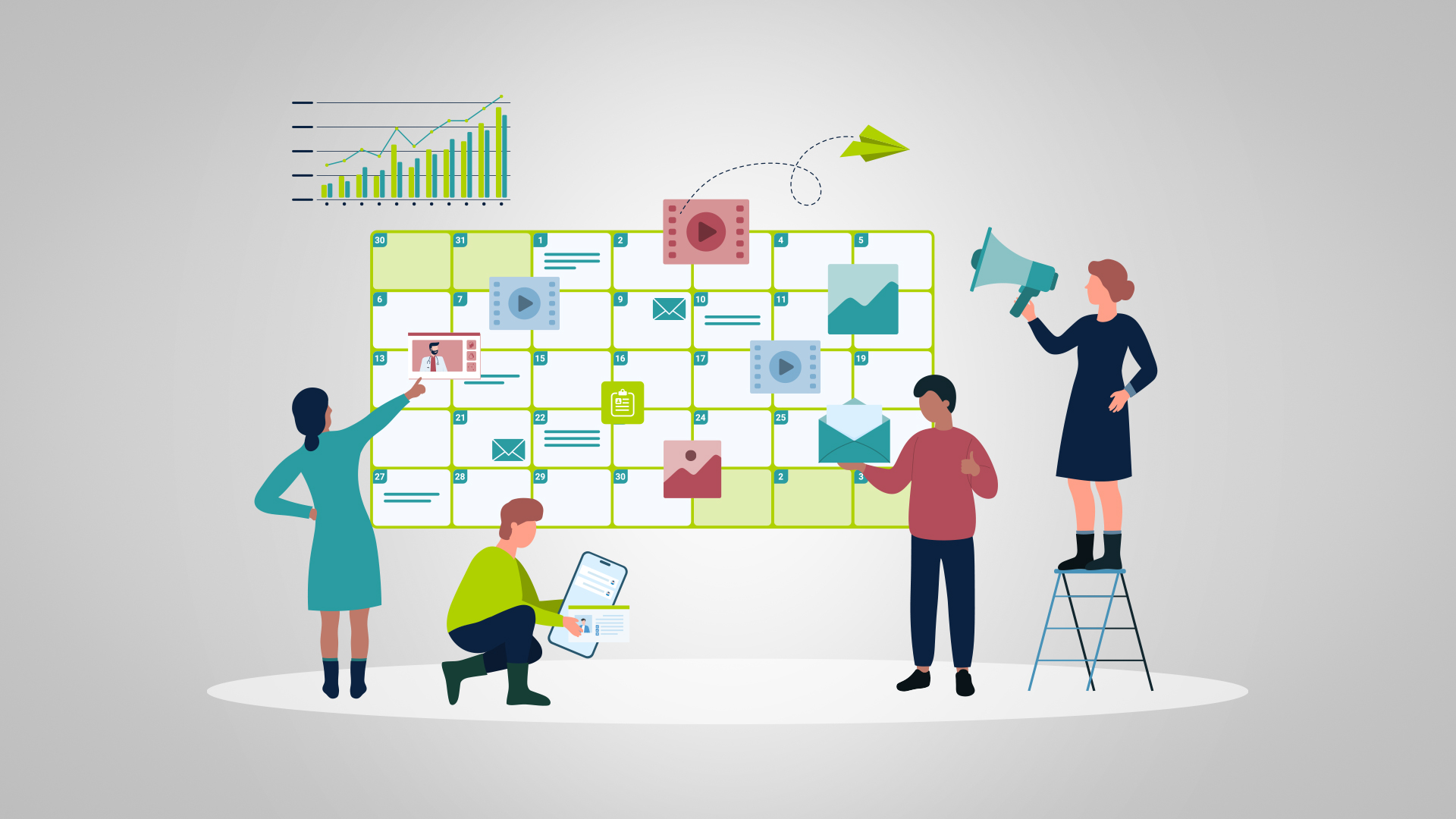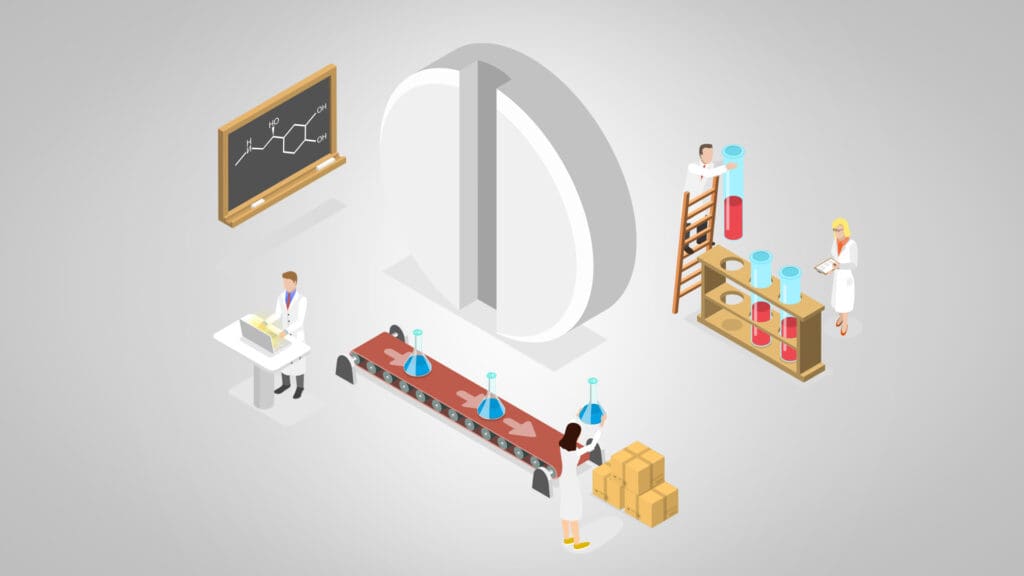
In-House or Agency for Media Planning? What Healthcare Brands Get Right (and Wrong)
Everyone in healthcare marketing wants to do media better. They want the easy button—press it, trim the budget, and watch the sales roll in. But in reality, the equation isn’t that simple. Consumers expect personalization and a seamless digital journey, yet they also bristle at the idea of advertisers using personal data to reach them. And let’s be honest—most people don’t even like ads. They just want you to show up, relevant and helpful, at the exact moment they need you.
In healthcare, that balancing act is even harder. Marketers are navigating HIPAA, compliance reviews, and complex patient journeys while still being asked to prove ROI. It’s like trying to MacGyver a media plan together with a paperclip and a pack of gum.
In this edition of Vital Signs, we’ll explore why more organizations are asking the same question: Should we build an in-house media team, or partner with an agency? With so much pressure to adapt and perform efficiently, the stakes for getting that decision right have never been higher.
KEY TAKEAWAYS
- Healthcare media planning is uniquely complex, requiring balance between personalization, compliance, and patient privacy.
- In-house teams know their brands deeply and can move fast, but need experienced talent to maintain performance and compliance.
- Agencies offer fresh perspective, cross-industry insight, and advanced tools that most brands can’t afford alone.
- Both models have tradeoffs. Internal teams risk tunnel vision, while agencies can lack transparency or speed.
- Hybrid setups often work best, with in-house teams owning strategy and agencies handling execution or specialized support.
- The right choice depends on a brand’s resources, goals, and ability to sustain the model effectively.
What Makes Healthcare Media Planning Different?
No question, healthcare advertising has a lot more red tape than CPG or retail. Over the last 20 years, media has evolved on the promise of precision. Big data and machine learning were supposed to make everything simple: less waste, better results, perfect targeting. Advertisers loved the idea that they didn’t have to guess anymore; they could practically stalk their ideal customers across the internet until they converted.
But eventually, people started asking questions: How much do these companies actually know about me? What are they collecting? Where is that data stored? Regulations followed, and healthcare (along with finance) took the biggest hit.
Marketing with one hand tied behind your back
Planning healthcare media today can feel exactly like that. The tools exist to target someone recently diagnosed with arthritis, but you can’t legally use them that way. So, your team has to get creative. They have to understand the laws, know where the lines are, and still find smart, compliant ways to reach the right audiences without crossing into dangerous territory.
That’s where non-specialized teams often get tripped up. They underestimate how different this space really is. They’ll say things like, “You can’t target patients in hospitals, but you can target doctors there,” which is technically true, but far harder to execute than it sounds.
Or they’ll treat all healthcare like one category, when in reality, every subsegment plays by its own rulebook. Pharmaceutical marketing isn’t the same as hospital marketing, which is not the same as cancer care, pain management, or addiction recovery. Each has its own hoops to jump through, and its own definition of success.
Strengths of In-House Media Planning
The biggest advantage for in-house healthcare teams is how deeply they know their own brand. They live it every day. They know the category, the audience, and the internal politics that shape every campaign. They have instant access to brand data, clinical teams, and legal reviewers, which means they can make faster, better-informed decisions. We always say: our clients will always know their business best. (Though, to be fair, a good agency usually knows it pretty well, too.)
And that deep knowledge really matters in healthcare. There’s a world of difference between cancer, pharma, pain management, and insurance. Each one has its own challenges, its own sensitivities, its own rules. An in-house specialist should be the ultimate authority on how their particular segment works, historically and right now.
When in-house works best
In-house models usually make sense for bigger organizations that already have strong marketing infrastructure. Consider health systems, big insurers, or multi-line companies that have to coordinate across departments. They already have the information and access they need to move fast.
That said, it’s not just about size; it’s also about resources. You need experienced people who understand compliance and performance, not just people who can place ads. Smaller teams can absolutely make it work, but if they don’t have those resources, the “savings” disappear quickly and performance usually follows.
Strengths of Agency Media Planning
Where agencies really shine is perspective. In-house teams live and breathe their brand, which is great, but it can also create tunnel vision. Agencies come in with fresh eyes and a healthy amount of “why do we do it that way?” energy. Because we work across different industries and categories, we can bring in new ideas and proven strategies that an internal team might never see.
Agencies also have access to tools and data that most brands can’t justify on their own. We invest in research platforms, audience modeling software, dashboards, and analytics tools that make campaigns smarter and faster to optimize. When you spread that investment across multiple clients, it makes sense economically, and it gives our partners access to enterprise-level capabilities without having to build them from scratch.
When industry expertise really matters
Specialization matters most when the rules are complicated and the stakes are high. Healthcare fits both. The right agency should know how to stay compliant and creative at the same time. They know the boundaries and how to get the most from what’s available.
That said, it doesn’t have to be an either/or choice. A good agency should complement the in-house team, not compete with it. If you’ve got someone strong at brand strategy or creative, an agency can help with the data, targeting, or media execution. It’s a partnership. Sure, you can make your ad in Canva, but should you? Maybe. It all depends on what you’re trying to achieve and how far you want to take it.
The Tradeoffs: Common Challenges in Each Model
No matter which model you choose, there’s always a tradeoff. In-house teams and agencies both have strengths, but they also have blind spots that can make even the best strategy a little messy in practice.
Where in-house hits the wall
When in-house teams run into trouble, it’s usually not because they don’t know their business. It’s because they’re buried in it. We tend to see brands call us when their internal team is overwhelmed, out of time, or just can’t get a human at Google or Meta to answer an email. Sometimes it’s a bandwidth issue; sometimes it’s that they don’t have a certain skill set—web development for some, media planning for others.
Over time, decisions can also start to drift from data to gut. Committees get involved, and you lose the objectivity that comes from looking across multiple categories. The team gets so used to their own world that “how we’ve always done it” starts to sound like strategy.
Where agencies fall short
Agencies aren’t perfect either. Clients get frustrated by the lack of control or transparency (and honestly, we don’t blame them). The cost can sting, especially when the work feels small or the value isn’t obvious. And nothing raises blood pressure faster than hearing, “We’ll need three to five business days to get back to you,” when something’s on fire.
There’s also a perception gap. A lot of agency people eventually go client-side and say, “I’ve done it.” Sure—but did you do it well? Are you still on the platforms? Are you keeping up with the constant changes? The best ones do, but not everyone does.
And when results stall, agencies can make an easy scapegoat. It’s simpler to point to the external partner than to look at what might be broken internally.
The healthcare twist
Healthcare amplifies all of this. These clients know their categories inside and out, and when they also know a little about agency work, they can be tough to challenge. There’s no secret button an agency can press to get around HIPAA or compliance. Everyone’s playing by the same rules. The reality is, it just comes down to who’s bringing the strategy and stamina to keep testing what’s possible inside the lines.
Healthcare Media Planning In-House vs. Agency Comparison Chart
| Dimension | In-House | Agency |
| Cost | Lower long-term costs with predictable budgets; savings increase at scale but require higher upfront investment. | Higher fees but lower startup costs; buying power improves rates, and ROI often outweighs costs for larger or complex campaigns. |
| Compliance Expertise | Direct oversight and strong policy alignment; teams understand HIPAA and internal culture, reducing compliance risks. | Compliance depends on expertise; healthcare-specialized agencies provide HIPAA-trained teams and strong safeguards. |
| Strategic Flexibility | Tight brand and legal alignment with full control of data; enables faster pivots and more personalized campaigns. | Brings objectivity and cross-industry insight with proactive strategy and exposure to new tactics and trends. |
| Access to Talent/Tools | Strong brand and patient insight but limited skill depth; requires ongoing hiring, training, and tool investment. | Access to multi-channel specialists and advanced tools, plus broad healthcare-specific experience. |
| Speed/Responsiveness | Enables rapid execution, quick crisis response, and real-time optimization using internal data and direct access to leadership. | Provides structured processes that support proactive planning and consistency; can offer additional manpower and assist internal teams with fast-turn needs. |
| Scalability | Scalability constrained by team size; hiring lags demand and peak periods risk burnout. | Easily scales with flexible staffing for surges, though resources are shared across clients. |
| Innovation/Benchmarking | Innovation limited by internal expertise; narrow exposure can lead to insular thinking. | Cross-industry insights drive innovation, with benchmarking and access to advanced tactics and platforms. |
| Media Buying Power | Works well for small or local buys; limited leverage in traditional media but increasing in-house programmatic adoption for control and transparency. | Leverages bulk buying power and vendor relationships with expertise in integrating traditional and digital media. |
Hybrid Models: The Best of Both Worlds?
More and more healthcare organizations are finding that the middle ground actually works best. Going fully in-house can feel impossible when every dollar has to be justified, and handing everything to an agency rarely makes sense either. The hybrid model—where internal teams own strategy and agencies handle execution or specialized support—has become the reality for a lot of healthcare marketers.
We’ve seen it work really well when both sides are clear about their roles. The most successful hybrid setups start when the in-house team comes to the table with defined goals and objectives, and we have an open conversation about where our expertise fits in. That gives everyone a clear path: here’s what success looks like, here’s where the agency adds value, and here’s how we’ll stay aligned along the way.
What hybrid looks like in practice
For some of our clients like Trilogy Health Services, the in-house team handles big-picture strategy, creative direction, internal communications, and organic channels. We focus on paid media strategy and execution and jump in on advanced analytics or technical projects when needed. We don’t worry about who “owns” what. Instead, we thoughtfully divide the work so that everyone gets to do what they’re best at.
Who keeps what
In most hybrid setups, strategy tends to stay in-house. People don’t usually pay for general thinking. Instead, they want action. Social and creative often stay internal too, since those teams can capture content quickly and respond in real time. Media execution varies. Some teams can handle the basics, but when it comes to multi-layer campaigns or advanced targeting, that’s usually where an agency steps in.
Research often stays internal as well, though the quality depends on how much time and priority it gets. Too often, it’s treated as “good enough,” which might work in the short term but not when you’re trying to prove ROI. And when internal teams get stretched too thin? They sometimes take the easy route and call a big media conglomerate like iHeart and just say, “Here, you do it.” It happens.
How to Decide What’s Right for Your Organization
The truth is, there isn’t a single one-size-fits-all playbook. In-house can work when the brand has tight access to people and data. Agencies help when you want an outside perspective or heavier tools. Many teams use a hybrid to keep momentum while staying compliant. Look at your goals and your setup, then decide what you can support. If you want a second opinion, talk with someone who does this every day. A short consult now can prevent wasted spend and headaches later.
Not sure which media planning model fits your team best?
At PriceWeber, our healthcare media planners work side by side with organizations to cut through the noise and find what actually drives results.
Let’s talk it through. Book a free 30-minute consultation with our team and walk away with clear next steps for your media strategy.
Our Articles Delivered
Signup to receive our latest articles right in your inbox.





